| View previous topic :: View next topic |
| Author |
Message |
pandreas68

Joined: 24 Jan 2020
Posts: 96
|
 Posted: Fri Apr 03, 2020 8:43 pm Post subject: Home made bag bellows [for Mamiya 645 auto bellows] Posted: Fri Apr 03, 2020 8:43 pm Post subject: Home made bag bellows [for Mamiya 645 auto bellows] |
 |
|
pandreas68 wrote:
Hi,
I made a bag bellows for my Mamiya auto bellows "technical camera" which is available in another thread.
I put this bag bellows respectively its creation into an own thread since I could not find too much of information about bag bellows so far and because it might be also interesting for other projects as just the Mamiya Auto 645.
The first thing I needed to figure out is the shape. There seem to be in general two different shapes. Bag bellows which more or less just consist of two quite large pieces of leather or fabric sewed together with holes in the middle to connect to the standarts. The other type connects the standards by a four sided cut pyramide if front and rear standard are of different size, otherwise by a kind of rectangular box or cylinder wich is similar in size as a normal bellows.
Due to simplicity I first wanted to make the first style. I created a small 1:1 model made of paper and found out that this shape is too rigid and does not really allow for movements. The second type made me fear that for low bellows extension the bellows get into the path of light.
Therefor I tried to find a picture of the original Mamiya wide angle /bag bellows and found one in ebay. It is actually a combination of both shapes. It is like a box respectively like a cylinder, but in a much wider diameter then the normal bellows. I decided to try out this.
Next question was the material. I decided to buy a DIN A3 peace of leather already when I still thought to make the first shape. I did regret this when seeing the problem of the paper and thought that I do not only need another bellows shape but also much more flexible material. But it ruled out that with this Mamiya kind of mixed shaped bellows it also works with leather.
Here what I did:
Sketching the top part of the "cylinder" by a pair of dividers and a felt-tipped pen:
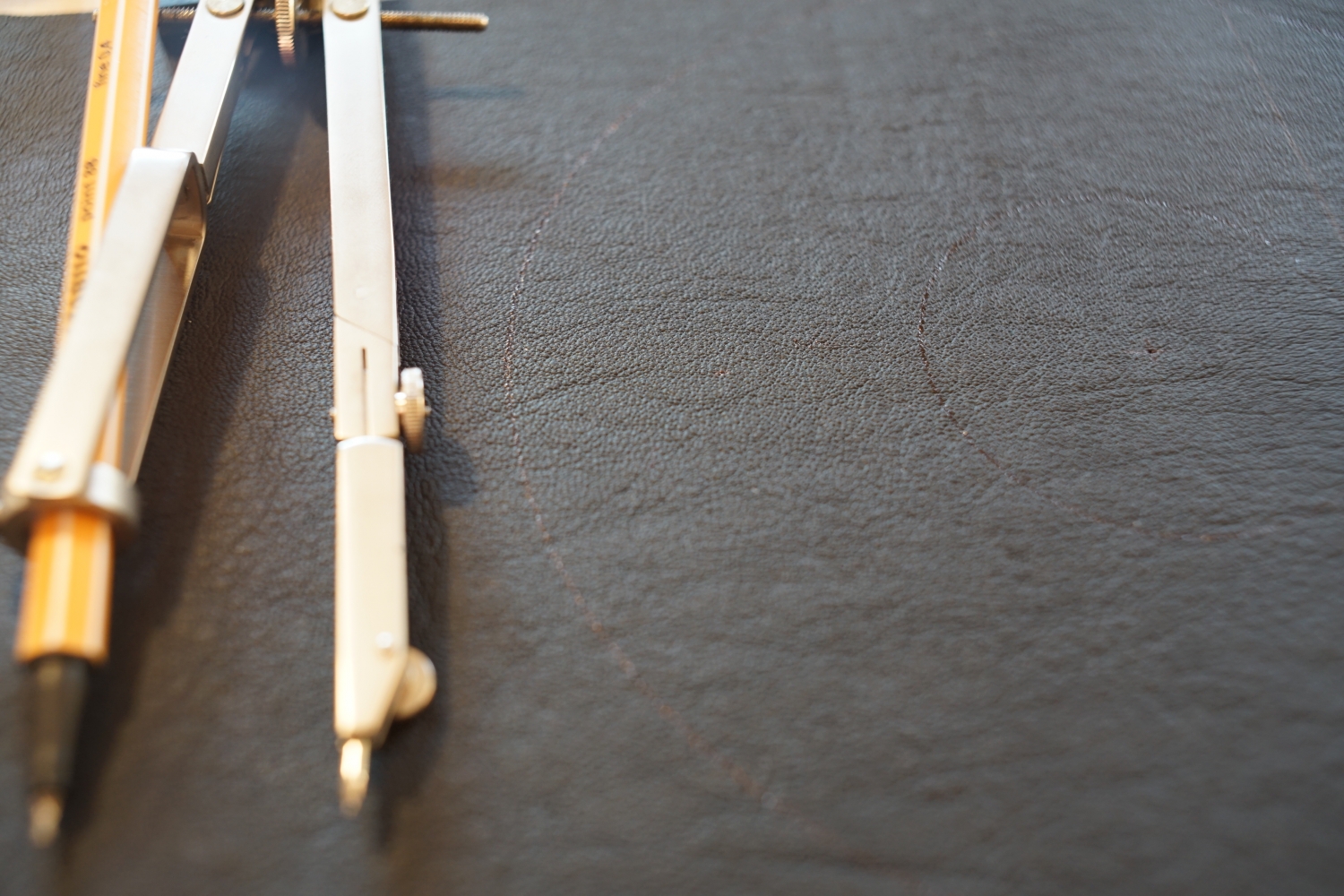
For sewing I first created the side of the cylinder (made of two stripes of together 50cm when sewed together), then for both bottom and top part I fixed them first at four points all 90 degree:

Then I sewed it roughtly in order to avoid that I have some centimeters left over when I reach the next fixed point:
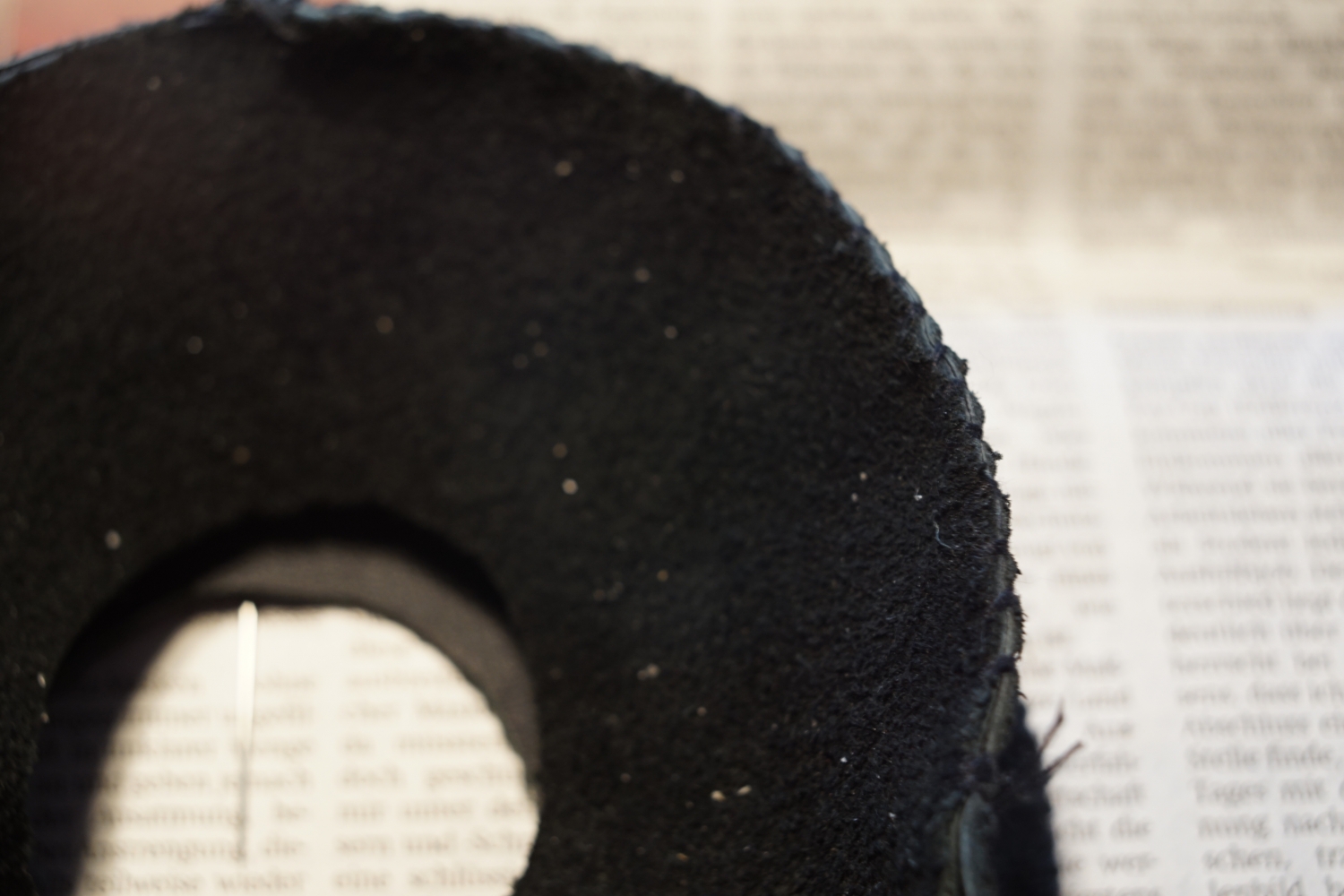
After doing this for all four 90 degree segments I sewed everything more closely in a distance of some 2 to 3mm, while I always took the thread twice:
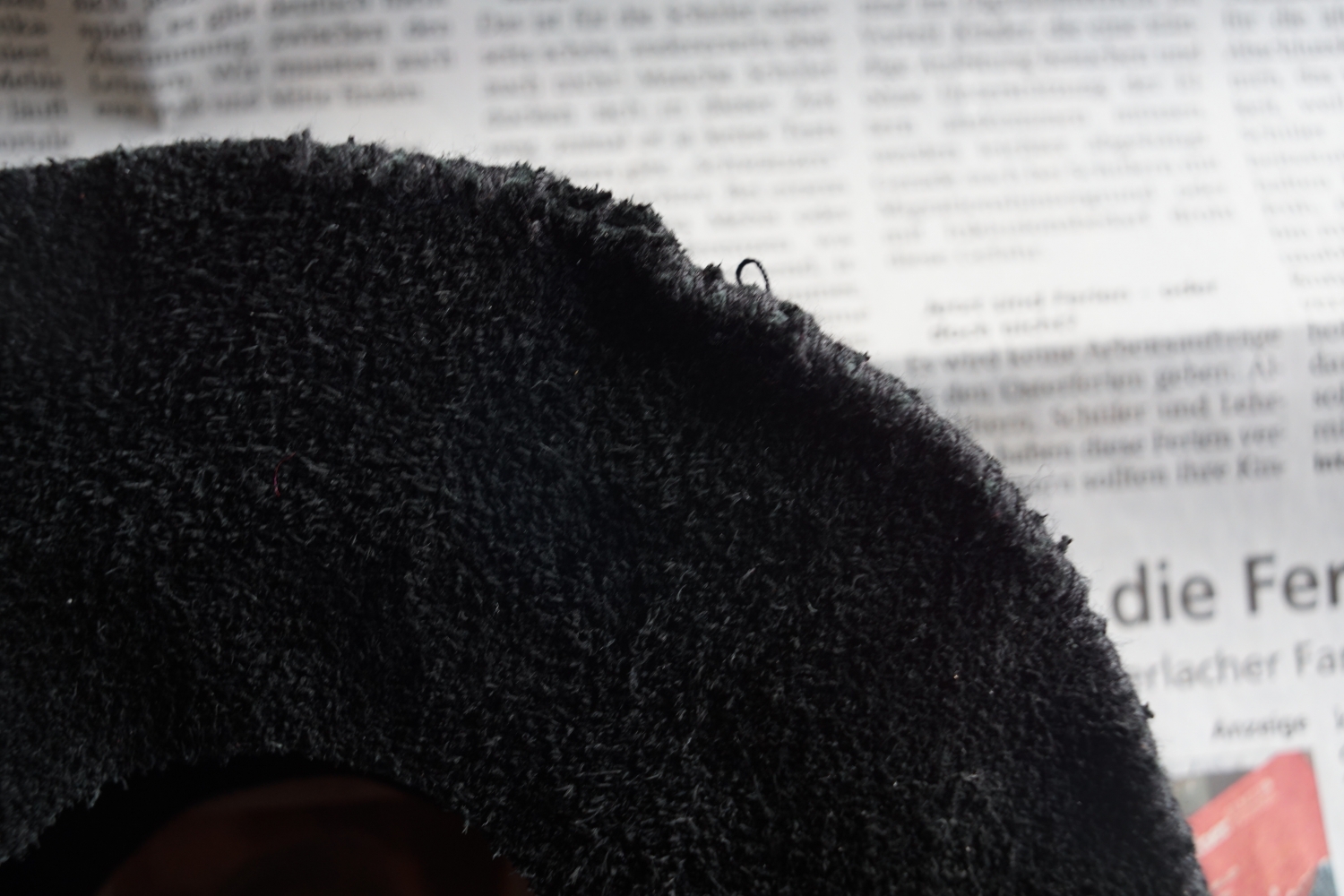
This picture shows the bellows after finishing sewing short before "cleaning up" with e.g. cutting off still away looking threads. It shows the shape of the bellows, especially its outside diameter in comparison to the diameter of the holes for the standarts. It could be reproduced in different sizes:
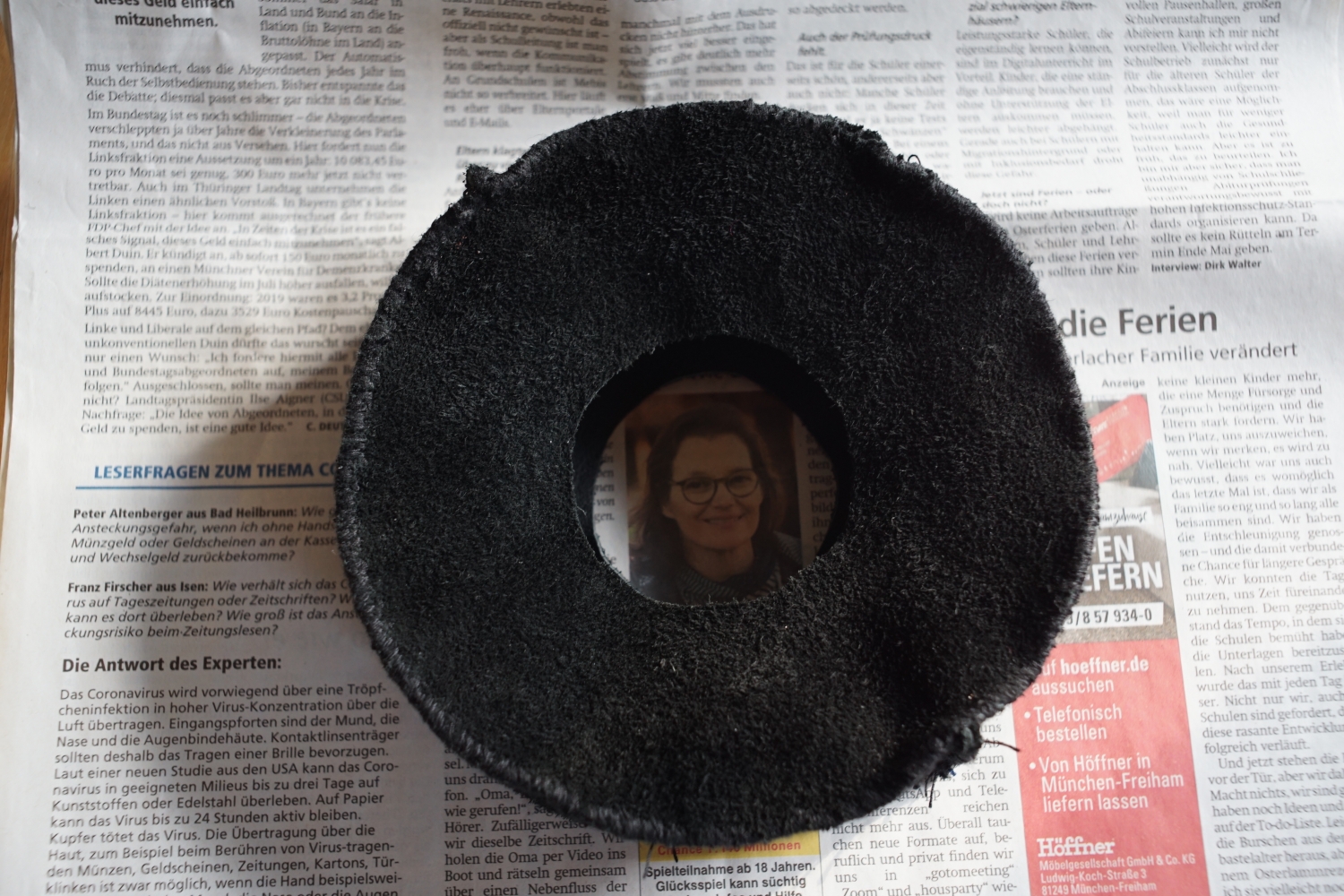
Next picture shows the stitching after cleaning up and using some shoe cream (applied on the thread only, to keep the bellos non shiny from inside):
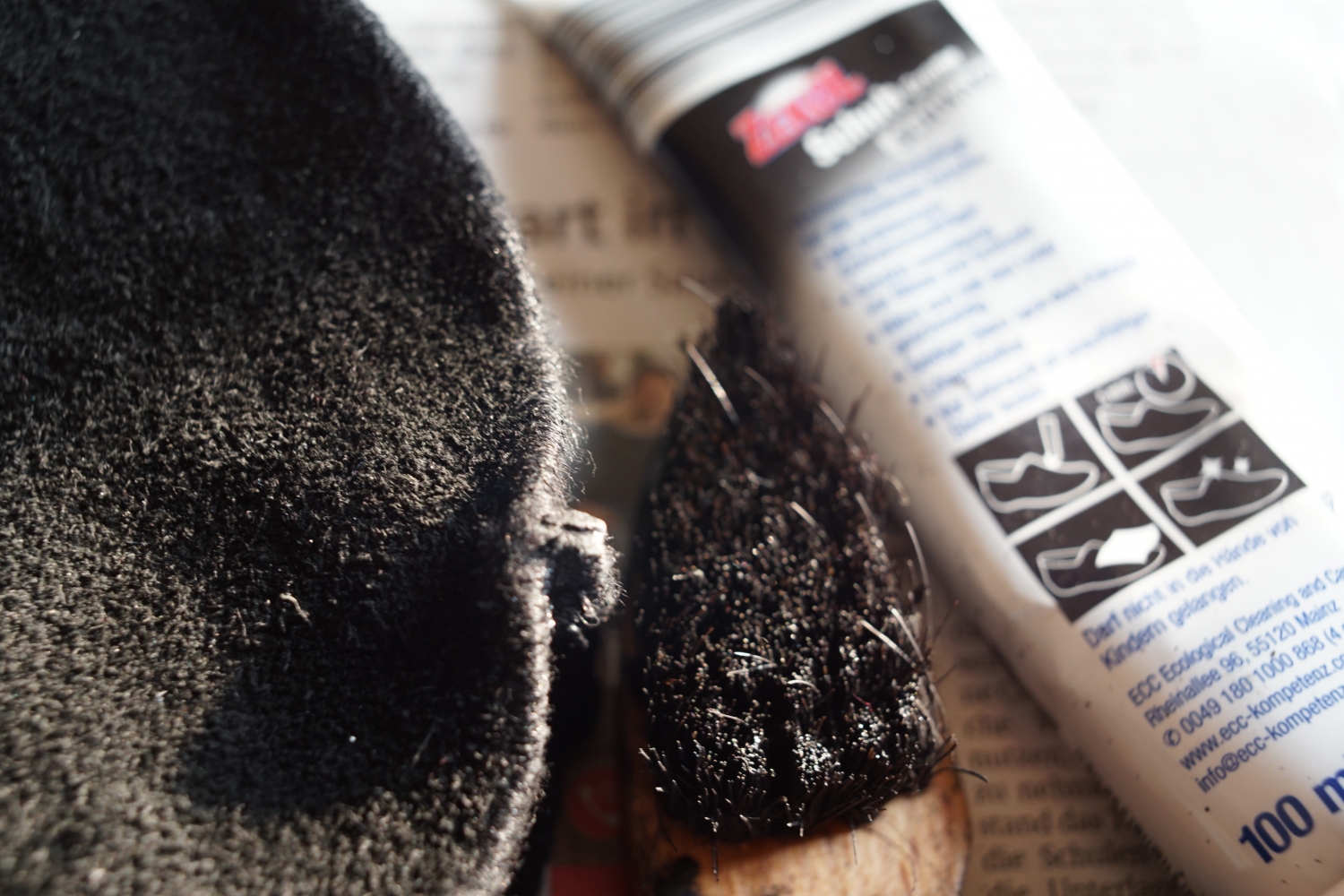
This picture shows the bellows turned around to the smooth leather side and with the standart connections allready glued. I wanted to use double sided tape, but could not find one. So I directly used instant adhesive. The problem it that it is fast... I glued the first and could not adjust it to look nicely with respect to the stitchings. The second I lued that it fitted to the first and started with four points only. That worked quite well; I should have done this also for the first. The glue is so good that currently I think that it is not needed to screw in a second part from within the bellows which I originally wanted to do.

This shows now the bellows in action (full rise):

For usage with the Mamiya 645 auto I used following dimensions:
Top and Bottom:
Outside diameter 17cm (after sewing approx. 16cm)
Inside diameter 6,4cm
Side of cylinder: 50cm long after sewing consisting of two stripes with a length of 26cm each. Each stripe was 5cm broad to achieve 4cm of cylinders length. Now I would give another cm in length but now more, otherwise it could hinder movements. But even with two cm more nothing would get into the path of light.
Material: leather with thickness of 1.5 -2mm sold in German ebay as nappa leather (Nappaleder); one side is smooth the other as if it would be a kind of felt. It is quite easy to sew but maybe too strong for a normal sewing machine. The material and stitchings are lightproove. The kind of felt side is non shiny so I used it to go inside.
Pictures made using the bellows will be posted in the Mamiya auto 645 technical camera thread. |
|
| Back to top |
|
 |
pandreas68

Joined: 24 Jan 2020
Posts: 96
|
 Posted: Sat Apr 04, 2020 9:47 am Post subject: Posted: Sat Apr 04, 2020 9:47 am Post subject: |
 |
|
pandreas68 wrote:
I forgot to write about the price of the bellows:
The leather sheet in A3 was 13,50 Euro including shipping. A Din A4 format may be sufficient, too - maybe with slightly reduced sizes of the bellows. The top and bottom part needed to be sketched at the upper left and lower right corner of the A4 sheet, so that the circles touch each other and the side of the cylinder sewed together from the remaining material.
The plastic parts I made from a 3mm PVC card measuring 21cmx32cm for which I paid 4 Euro including shipping.
The 3mm card was actually already used for creating a Pentax 110 to MFT adapter with integrated diaphragm.
Last but not least I needed some 20m of thread, which I took from my wife and some shoe polish.
Everything was done using hand tools only: a handdriller, my jig saw from children days, a file, sand papers (to matt the plastics, a needle, cisors, pair of dividers. The pair of dividers could be replaced of course by printing on paper and gluing the paper on the leather in the center which is cut away anyway. |
|
| Back to top |
|
 |
philslizzy


Joined: 07 Aug 2012
Posts: 4745
Location: Cheshire, England
|
 Posted: Sat Apr 04, 2020 10:40 pm Post subject: Posted: Sat Apr 04, 2020 10:40 pm Post subject: |
 |
|
philslizzy wrote:
A really interesting project. I'm wondering if this technique could be used to make a large format camera bellows
_________________
Hero in the 'messin-with-cameras-for-the-hell-of-it department'. Official. |
|
| Back to top |
|
 |
pandreas68

Joined: 24 Jan 2020
Posts: 96
|
 Posted: Sun Apr 05, 2020 1:56 pm Post subject: Posted: Sun Apr 05, 2020 1:56 pm Post subject: |
 |
|
pandreas68 wrote:
Large format bellows: I'd say yes. Only the dimensions needed to be adapted. The material and the stitchings are lightproof to my findings. If needed however I could do a picture with some 10 sec of time and cap instead of lens to really proof it. |
|
| Back to top |
|
 |
ZoneV

Joined: 09 Nov 2009
Posts: 1632
Location: Germany
Expire: 2011-12-02
|
 Posted: Wed Sep 08, 2021 9:58 am Post subject: Posted: Wed Sep 08, 2021 9:58 am Post subject: |
 |
|
ZoneV wrote:
| philslizzy wrote: |
| A really interesting project. I'm wondering if this technique could be used to make a large format camera bellows |
Quite sure!
I dis something near that for my Plaubel Peco Junior 10x15 camera some years ago.
_________________
Camera modification, repair and DIY - some links to look through: http://www.4photos.de/camera-diy/index-en.html
I AM A LENS NERD!
Epis, Elmaron, Emerald, Ernostar, Helioplan and Heidosmat.
Epiotar, Kameraobjektiv, Anastigmat, Epis, Meganast, Magnagon, Quinar, Culmigon, Novotrinast, Novflexar, Colorplan, Sekor, Kinon, Talon, Telemegor, Xenon, Xenar, Ultra, Ultra Star. Tessar, Janar, Visionar, Kiptar, Kipronar and Rotelar.
|
|
| Back to top |
|
 |
|
|
|
You cannot post new topics in this forum
You cannot reply to topics in this forum
You cannot edit your posts in this forum
You cannot delete your posts in this forum
You cannot vote in polls in this forum
|
